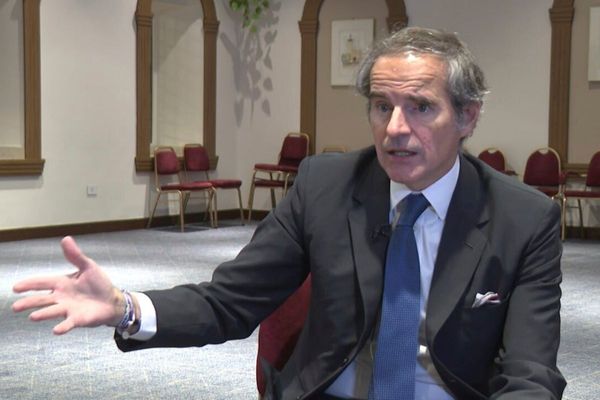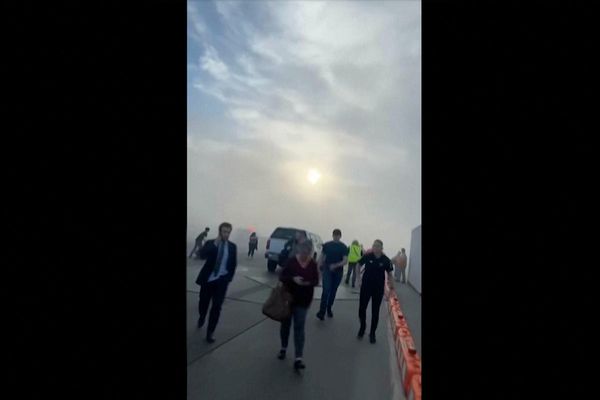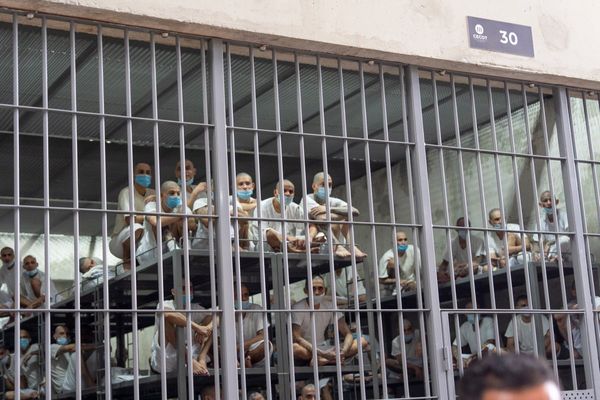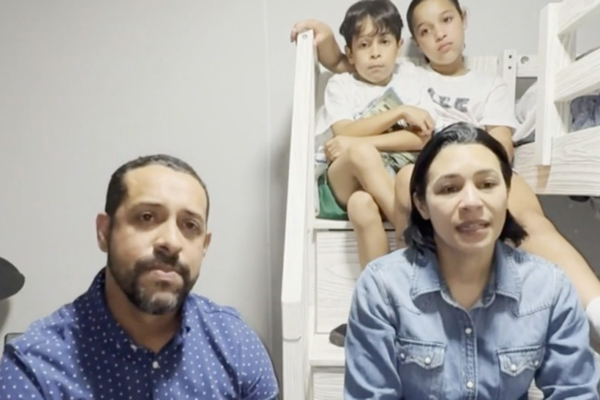
Did Gordon Buchanan just lick whale snot off his face? I think he did. Yummy. In Equator from the Air (BBC Two), the wildlife-cameraman-turned-TV presenter is on a journey around the equator, swooping down from whatever propeller plane/helicopter/hot-air balloon he happens to be on to tell the story of what is happening on the ground – or sea. Or rather, to show what havoc humans are wreaking on the natural world. So here he is, on a boat off the coast of Gabon, in west Africa, tracking humpback whales by drone. He is hoping one of them will cover some petri dishes with “exhaled breath concentrate” so scientists can find out the effects that growing offshore development is having on them. Ship engines are drowning out the whales’ communication systems; pollution is impairing their immune systems. The snot samples will provide information on things such as the whales’ hormone levels and viral loads. Getting some on your face is just a hazard of the job.
But we started 2,500 miles away in east Africa, where Buchanan sets out the show’s premise – something about how viewing the world from the air changes our relationship with nature and how salvation “could come from above”. I’m not convinced this is anything more than the pitch of some clever TV person, but it’s a good enough idea for a programme. So we see the new roads, towns and power stations spreading in Kenya’s Great Rift Valley. An impressive gathering of hundreds of thousands of flamingos on Lake Bogoria is a wondrous sight from Buchanan’s small plane, as are the blooming green swirls of the algae they feed on. They used to be seen at another lake, not far away at Nakuru, but the encroaching city, now Kenya’s third largest, and its deforestation and increase in run-off water changed its chemical makeup. The algae disappeared, and so did the flamingos, all within about a decade.
Around the edge of the Maasai Mara, wildebeest are getting strangled by farmers’ fencing and elephants are getting into trouble with humans. Buchanan is called out on a helicopter to help attend to an elephant who has been shot with an arrow. A few years ago, before the air patrols, 120 elephants a year were being killed, says the man from the Mara Elephant Project. I don’t think I’ll ever tire of seeing elephants being nice to other elephants. The injured female is shot with a tranquilliser dart but her herd won’t leave her. One, heartbreakingly, tries to raise her with its trunk.
The vets on the ground patch her up, but then there’s another call – this time a baby elephant has caught its trunk in a snare, the traps used to fill an increasing demand for bushmeat. The calf is too young to be sedated, so is held down by conservationists while the vet cuts away at the snare, before the wound is cleaned. “I can’t show you this in any detail because it’s too …” Buchanan puts his hand over his mouth, looking pained. “It’s too bad.” This is irritating. Viewers of nature documentaries are used to seeing terrible things – and the more terrible things at the hands of humans we are shown, the better, in my view. How bad can it be? The calf is up and running back to find its mother within minutes.
It’s not the only off note. There are subtitles to clarify the speech of contributors who are perfectly understandable. And there are too many shots of Buchanan – affable though he is – in a plane, and not enough of what he’s seeing. “You have to take it from me,” says Buchanan – in a plane – swooping over the rainforests that cover 90% of Gabon, “this is some of the most spectacular scenery I have ever seen. You do feel like you’re looking down on some kind of Eden.” I know we are spoiled by awe-inspiring landscape footage in big-budget natural world documentaries now, but many of the aerial shots here – in a show based on this idea – seem a bit flat.
Better are the stories he unearths on the ground. The Bidi Bidi refugee settlement in Uganda is a city of 280,000 that has sprung up in around three years, swelled by the numbers of people fleeing civil war in South Sudan. A group of young men on motorbikes are using satellite positioning to create a map of the city, logging the locations of community facilities such as water points, clinics and schools, to highlight what resources are lacking (all of them).
In Gabon, Buchanan visits an abandoned gold mine (“it’s like a big scar in the forest”) with Joseph, director of aerial operations for the National Parks Agency, who explains how the eroded land could be polluted with toxic mercury. “It’s like a lunar landscape,” says Buchanan. “All the trees have gone.” Patrolling by air, says Joseph, is important to the survival of the forests: “If you won’t monitor these sites, I’m sure that in the future they will destroy more landscape.” We will, won’t we, because this programme, like many others, vitally reinforces the view that the Anthropocene is an unfolding disaster. Perhaps the whale snot was some kind of protest.







